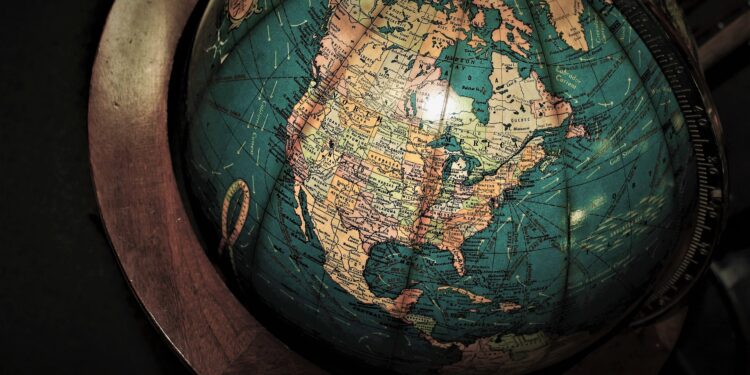Because geography was not regarded as being essential to the level of experience required to obtain employment, attempts had even been made to completely exclude it entirely from the standard curriculum in the prior decade.

One helpful statistic that was used at the time to write about “defense geography” demonstrated the case for the subject’s preservation. Employers claimed that they actively sought out geography degree holders during the 1990s economic downturn because they had a widening, more well-rounded, and more intelligent perspective on the globe than their colleagues. Geography graduates were more likely to obtain employment when they started to enter the market.
In 2022, for the eleventh year in a row, more students are pursuing the GCSE in geography, which now has a student body of 289,351. A generation of learners who are eager to understand well about state of the world and the individuals who live in it have embraced the subject, which appears to have withstood the storm.
Employers will continue to look for geographers as a result of climate disasters, migration, conflict over water, and resource depletion.
What GCSEs are?
General Certificate of Secondary Education is what this term refers to as GCSE. Colleges, employers, and schools are highly prized.
The qualification mostly entails studying a subject’s theory while also requiring some research and, in certain cases, practical work. They typically last five terms and are studying full-time in high school or college. More than 60 academic and occupational fields provide GCSEs.
What are students currently taught?
In geography and science classes, students already study urbanization, landscapes, and habitats.
The education secretary announced at COP26 that by 2023, a new science curriculum will be in place that will assist teachers in teaching about climate change.
From Key Stage 3 (the start of secondary school), climate change is taught in science, citizenship, and geography classes as part of the curriculum.
The fundamental ideas, such as what a climate is, how it varies, and the distinction between man-made and natural environments, are taught to students in elementary school.
A broader Environmental and Climate Change Strategy will be unveiled by the education secretary, which will “assist young people in developing strong STEM skills and real-world opportunities to enhance biodiversity and climate resilience.”
Does the GCSE Geography Curriculum need further modernization?
This is not to imply that the most recent exam board requirements have not seen a considerable improvement. The majority of exam boards typically give the environment a lot of consideration; global ecosystems are frequently mentioned, and the three main evaluating organizations also make mention of the dynamics of globalization. However, allow me to elaborate. The geography curriculum has to undergo a number of adjustments in order to represent our world in 2019.
1) According to the UN, human-caused climate change is the “defining issue of our time.” “. As a result, it should take up 2/6 of the geography GCSE curriculum. Additionally, refrain from prefacing classes on the natural reasons for climate change with statements like “there are a variety of plausible causes of climate change” as this would give pupils a false sense of the situation. It offers the sort of “balanced” “Argument that Nigel Lawson made while speaking alongside a climate expert on BBC Breakfast.
2) Each course should also include a minimum of 1/6 of “development and advancement,” but it should be presented slightly differently. would utilize case studies like the Bill and Melinda Gates Foundation in addition to conventional case studies, which typically portray LIC countries being exploited by TNCS, to emphasize the scope of human progress over the past 100 years while avoiding the standard Global North/South fallacy.
3) Each course should include one-sixth of geopolitics. While completely avoided at the GCSE level, this subject is covered in university and A-Level geography curricula. Is this a result of a presumption that the pupils won’t comprehend it despite its growing importance to geography? There appears to be a significant opportunity being squandered here to establish synoptic links that will help resolve geopolitical problems related to water, food, and energy in the future.
4) Globalization and technology must always be covered in the requirements, accounting for 1/6 of the course once more: Almost all of the issues that led to the civil war in Syria and Mohammed’s arrival in Greece, including social media, automation, antibiotic immunity, and rural-urban migration, ought to be discussed in GCSE Geography, in my opinion. From where else can students find this kind of information if geographers do not provide it?
It is obvious that barely 1/6 of the “free” space is left after all the alterations listed above. The ecosystem and global ecosystems are adequately covered by all of the current standards, and I believe they should remain. Thus, the specification is complete, and what is being proposed here is actually a different GCSE curriculum due to the geographic obstacles that our pupils will confront after they quit the classroom.
Aware that most of the current specification information for exam boards that include UK geography will be lost. However, no other discipline is prepared to cover these topics, which are becoming more and more crucial. contend that understanding meanders or other types of erosion is of much less importance to our kids than awareness of the repercussions of climate change, the impact of social media on people, and the dramatically improved global health. Planning for the present in GCSE Geography should involve looking to the future.









